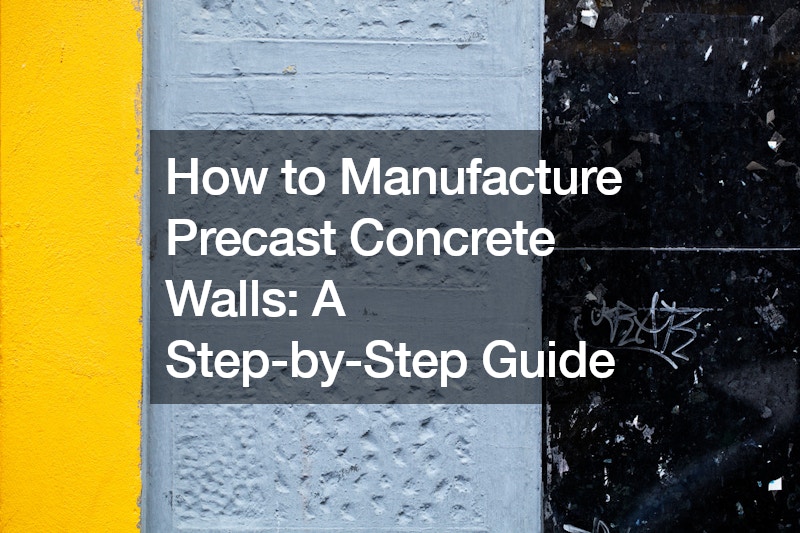

Manufacturing precast-concrete walls involves a meticulous process requiring attention to detail and strict standards. In this extended guide, we’ll delve deeper into each step of the process, providing comprehensive insights and practical tips for achieving optimal results.
Step 1: Material Selection and Preparation
The foundation of any successful precast concrete wall begins with the selection of high-quality materials. While crushed rock, sand, and limestone-based minerals are commonly used, it’s essential to ensure consistency and uniformity in particle size distribution to achieve the desired properties in the final product. Conducting thorough material testing and analysis can help identify potential variations and mitigate risks early in the production process.
Moreover, consider exploring alternative aggregates and additives to enhance performance and sustainability. For example, incorporating recycled materials such as crushed glass or industrial by-products like fly ash can reduce environmental impact while maintaining structural integrity. By experimenting with different material compositions, you can tailor the mix to meet specific project requirements and regulatory standards.
Step 2: Mixing and Forming
Once the materials are selected and prepared, they are carefully mixed to achieve a homogeneous blend with optimal workability and consistency. During the mixing process, additives such as plasticizers or air-entraining agents may be introduced to improve flowability and reduce water content, enhancing the overall quality of the concrete mix.
In addition to traditional mixing methods, consider employing advanced technologies such as automated batching systems or computer-controlled mixers to ensure precise material proportions and uniform distribution of aggregates. These technologies not only streamline the mixing process but also minimize waste and improve production efficiency.
When it comes to forming precast concrete walls, creativity and innovation play a crucial role in achieving unique designs and surface textures. Experiment with various forming techniques, such as using custom molds or incorporating decorative elements like embedded patterns or textures. By leveraging advanced formwork materials and techniques, you can push the boundaries of design possibilities and create visually stunning architectural elements.
Step 3: Reinforcement Installation
Reinforcement is a critical component of precast concrete walls, providing structural strength and durability to withstand external loads and environmental conditions. High-strength steel cables and rebar rods are commonly used to reinforce the concrete and enhance its tensile strength.
To optimize reinforcement installation, consider prefabricating reinforcement cages off-site and integrating them seamlessly into the casting process. This approach not only improves accuracy and consistency but also reduces labor costs and construction time. Additionally, explore alternative reinforcement materials such as fiber-reinforced polymers (FRP) or carbon fiber grids, which offer superior corrosion resistance and durability compared to traditional steel reinforcement.
Step 4: Finishing and Curing
Achieving a smooth and uniform finish is essential for precast concrete walls, as it enhances aesthetics and durability while ensuring structural integrity. After the concrete is poured into the molds, it is carefully finished and leveled using specialized tools such as screeds and trowels. Pay close attention to surface preparation and finishing techniques to minimize defects and imperfections in the final product.
Once the walls are demolded, they undergo a curing process to achieve optimal strength and durability. Traditional curing methods involve moist curing or air curing in controlled environments for a specified period. However, consider implementing innovative curing techniques such as steam curing or accelerated curing to expedite the curing process and improve production efficiency.
Step 5: Quality Control and Testing
Quality control is paramount in precast concrete manufacturing to ensure that the finished products meet stringent quality standards and project specifications. Implement comprehensive quality control measures, including regular inspections, material testing, and process monitoring, to identify and address any deviations or defects early in the production process.
Invest in advanced testing equipment and technologies, such as non-destructive testing methods and automated monitoring systems, to enhance quality assurance and compliance with industry standards. Additionally, maintain detailed records of all quality control activities and testing results to facilitate traceability and continuous improvement initiatives.
Conclusion
Manufacturing pre-cast concrete walls is a complex process that requires careful planning, precision, and expertise. By following this comprehensive guide and exploring alternative approaches, you can optimize the manufacturing process and deliver high-quality, durable concrete walls for various construction projects. Whether you’re building residential homes, commercial structures, or infrastructure projects, precast concrete walls offer a versatile and sustainable building solution that stands the test of time.
.






